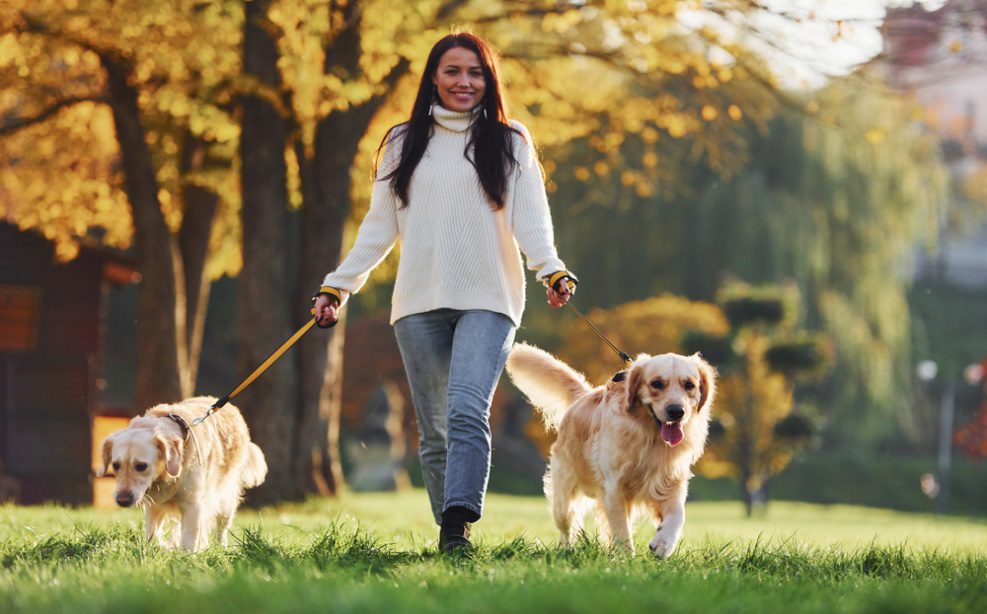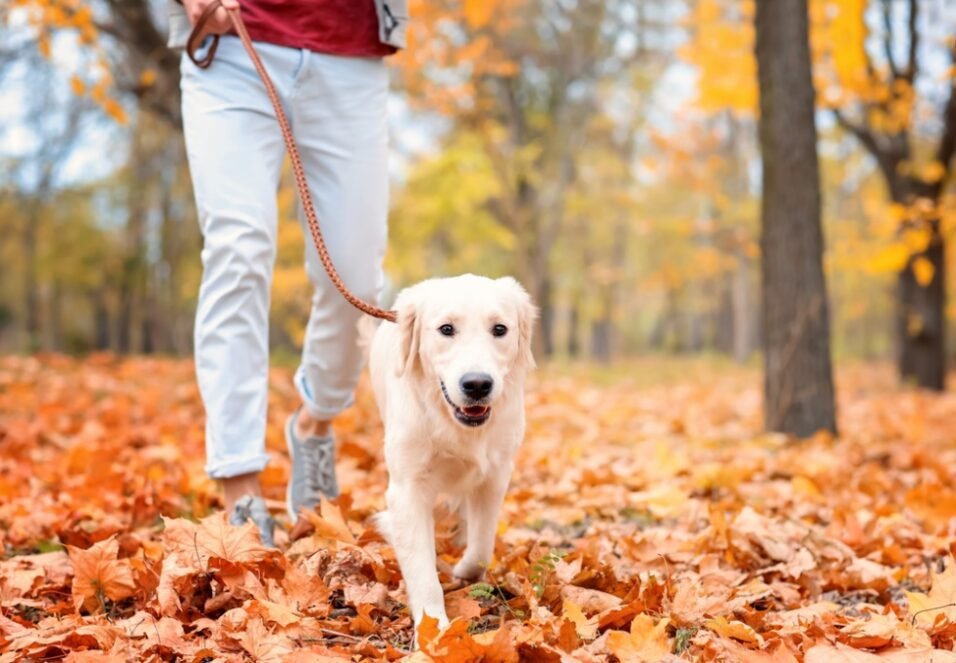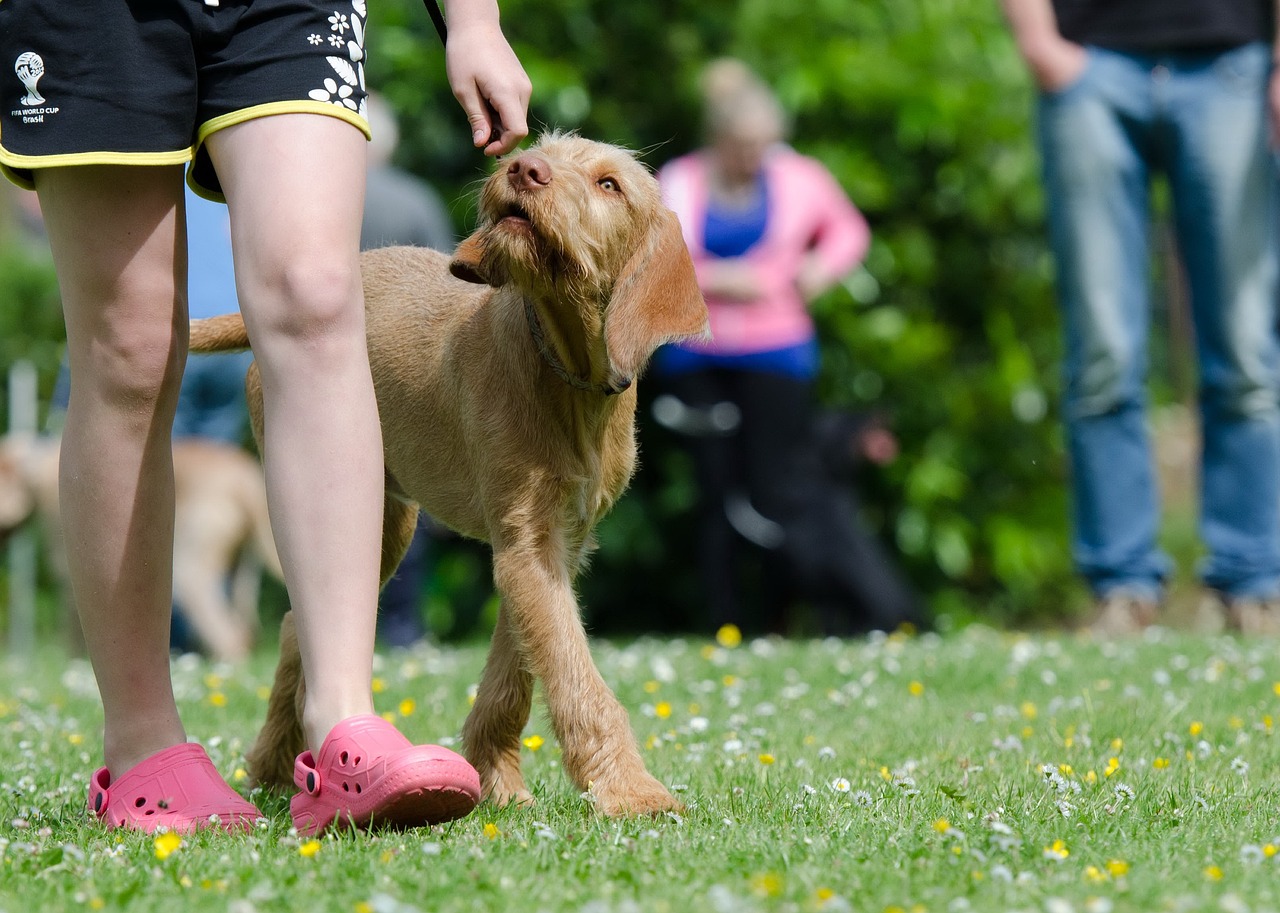Last Updated on June 22, 2023 by Dogs Vets
How Does Dog Board and Train Help Avoid Dog Injuries?
Welcome to a world where your dog can learn essential skills in a safe, structured environment, guided by expert trainers.
Dog board and train programs have been transforming the lives of dogs and their owners by teaching critical obedience commands, leash manners, and socialization skills.
But did you know that these programs can also answer the question, “how does dog board and train help avoid dog injuries?”
In this blog post, we will delve into the many ways that dog board and train programs contribute to injury prevention and overall well-being for your beloved furry friend.
Short Summary
- Board and train programs provide professional guidance to teach essential commands, leash manners & control, socialization skills, and confidence-building activities for injury prevention.
- Expert trainers with industry certifications ensure dogs are trained in a safe environment while owners stay informed of progress.
- Choosing the right board and train program based on qualifications, safety & cleanliness is key for successful training that promotes lifelong commitment to dog health.
Preventing Injuries Through Proper Training
Preventing injuries is one of the primary objectives of board and train programs.
These programs efficiently teach dogs essential commands and etiquette within a short period, thanks to the guidance of professional trainers who help the dogs avoid mistakes and master foundational skills.
By removing at-home triggers and distractions during training, unwanted behaviors are not reinforced, further reducing the risk of injuries.
Many board and train programs offer comprehensive training that covers basic obedience commands, leash manners, socialization skills, and house manners, ensuring a less stressful experience for both the dog and the owner.
When you, as a dog owner, are involved in the training process, you receive updates on your pup’s progress and learn how to reinforce their behavior when they come home, even if you have a busy schedule.
Basic Obedience Commands
Basic obedience commands form the foundation of a well-behaved dog. In board and train programs, dogs acquire essential commands such as “sit,” “come,” and “place“.
Mastering these basic commands helps prevent injuries by ensuring that your dog listens to you in potentially dangerous situations.
For example, a dog that understands the “come” command can be called back before it runs into traffic or gets into a fight with another dog.
It is crucial to note that board and train programs may not address intricate aggression cases with no straightforward solution.
In such situations, a customized training approach might be more appropriate. Nevertheless, for most dogs, learning these fundamental obedience commands through a board and train program is an effective way to prevent injuries.
Leash Manners and Control
Appropriate leash manners are essential for injury prevention. A dog that walks calmly on a leash without pulling or lunging is less likely to cause accidents or injuries to itself, other dogs, or people.
Board and train programs often employ techniques like loose leash training, which curtails leash-pulling behaviors and facilitates a more comfortable experience for both you and your dog during walks.
Dogs exhibiting leash reactivity might require day training to address their specific issues.
By working with a professional trainer, your dog can learn to walk calmly on a leash, reducing the risk of injuries that may result from sudden lunges, pulling, or confrontations with other dogs.
Socialization Skills
Socialization skills are vital to injury prevention. Dogs need to learn how to interact with other dogs and people, be exposed to different environments and situations, and develop good manners and behavior.
Proper socialization helps prevent fear and anxiety in dogs, enabling them to become well-adjusted pets that are less likely to cause harm to themselves or others.
Board and train programs offer an intensive approach to socialization skills development, typically over the course of 7, 14, or 21 days.
Puppy camps for dogs under five months of age provide house training, intensive socialization, and developmentally appropriate training, instilling beneficial habits from the outset.
This early investment in socialization can help prevent injuries later in your dog’s life.
Expert Trainers and Safe Environments

Expert trainers play a crucial role in preventing dog injuries. Their knowledge and experience enable them to address behavioral problems, enhance socialization abilities, and fortify the connection between the dog and owner.
In addition, expert trainers can offer mental stimulation and assist dogs in developing confidence, further reducing the risk of injuries.
These trainers typically work in state-of-the-art training facilities, such as the Training Tracks Canine Learning Center, which are staffed by experienced and qualified personnel with a high staff-to-dog ratio.
These safe environments allow dogs to focus on their training without disruptions or potential risks, ensuring that they learn the correct behaviors in a secure and efficient manner.
Qualified and Experienced Trainers
It is essential to choose a qualified and experienced trainer for your dog’s board and train program. Although no federal or state certifications are necessary, trainers should possess patience, persistence, and a positive attitude to be successful.
Some trainers may also obtain certification from organizations like the Certification Council for Professional Dog Trainers (CCPDT) or complete a program approved by the CCPDT or International Association of Animal Behavior Consultants.
Having a qualified and experienced trainer is vital in delivering the most effective training for your dog, as they have the expertise and proficiency to guarantee that your dog is learning in a secure and efficient manner.
This, in turn, helps prevent injuries by ensuring that your dog is well-behaved and can respond appropriately to various situations.
State-of-the-Art Training Facilities
State-of-the-art training facilities are crucial for injury prevention. Advanced equipment and technology, ample space, and a safe environment for dogs to train in are some features of such facilities.
These facilities help trainers deliver the highest standard of training for dogs, track their development, and ensure that they are learning in a secure and efficient way.
Safety is paramount when choosing a board and train program for your dog.
Creating a secure atmosphere enables your dog to concentrate on training without any disruptions or possible risks, ensuring that they learn the correct behaviors and are not exposed to any potential harm.
Building Confidence and Reducing Anxiety

Board and train programs also help build confidence and reduce anxiety in dogs, which plays a crucial role in injury prevention.
Instilling confidence in dogs assists them in feeling more secure and less anxious in novel or tense situations, enhances their general conduct and obedience, and enables them to manage strange situations and transformations in their surroundings with ease.
These programs achieve this by providing exposure to distractions and engaging in confidence-building activities. Let’s explore these aspects in more detail.
Exposure to Distractions
Exposing dogs to distractions during training has numerous benefits. It helps build their confidence and reduces anxiety, thus helping to prevent injuries.
Introducing dogs to various locations and activities during training can also increase their self-assurance, thereby reducing the likelihood of developing separation anxiety when not in your presence.
Puppy camps are specifically designed for puppies under five months of age. They provide house training, intensive socialization and developmentally appropriate training to help instill beneficial habits from the very start.
Exposure to different environments and situations at a young age enables puppies to grow into confident, well-adjusted dogs that are less prone to injuries.
Confidence-Building Activities
Various activities can help build confidence in dogs, such as nose work games, trick training, free shaping exercises, and socialization with other dogs and people.
Engaging in these activities helps bolster a dog’s confidence and problem-solving skills, reducing anxiety and the likelihood of injury.
Nose work games, for example, instruct a dog to utilize their sense of smell to locate concealed objects or treats, while trick training teaches new behaviors and commands in an engaging way.
Free shaping exercises, on the other hand, involve teaching a dog to perform a behavior without the use of a verbal cue, thereby building their confidence and problem-solving skills.
Owner Education and Continued Training
Owners play a significant role in their dog’s training journey. Board and train programs educate owners on how to effectively transfer the skills their dog has acquired to them and encourage them to maintain a long-term commitment to training.

Lifelong dedication to training is essential, as it facilitates the maintenance of good behavior and prevents injuries.
Some board and train programs may require owners to partake in regular hands-on classes or private sessions during their dog’s duration in the program.
This involvement ensures that owners stay updated on their dog’s progress and learn how to reinforce their behavior when they come back home, ultimately contributing to injury prevention.
Transferring Skills to Owners
Transferring skills to owners is a vital aspect of board and train programs. Owners learn basic obedience commands such as sit, stay, come, and heel, as well as behavior management techniques and the ability to interpret canine body language.
These skills allow owners to maintain their dog’s good behavior and prevent injuries at home or in public settings.
Some programs, like the Total Immersion program, instruct owners and their family members in their homes, ensuring that the necessary lessons are delivered in a familiar environment.
This personalized approach helps owners feel more confident in reinforcing their dog’s training and maintaining a lifelong commitment to their dog’s well-being.
Lifelong Commitment to Training
A lifelong commitment to training is essential for injury prevention and overall well-being. Consistent training enhances a dog’s behavior, increases their obedience, and strengthens the bond between the dog and its owner.
Additionally, sustained training helps reduce anxiety and fosters confidence in dogs, as they are exposed to various settings and stimuli.
Upon completion of a board and train program, owners often receive additional support, such as free access to an online classroom, to help maintain their dog’s training.
This ongoing support ensures that owners can continue to reinforce their dog’s good behavior and prevent injuries throughout their dog’s life.
Choosing the Right Board and Train Program for Your Dog
Selecting the right board and train program for your dog is essential for injury prevention and overall well-being.
Before enrolling your dog in a program, conduct a thorough evaluation of the potential dog trainer or training business, considering factors such as the trainer’s qualifications and experience, as well as the safety and cleanliness of the facility.
Cost, duration, and the specific training methods used are also important factors to consider when choosing a board and train program.
Additionally, make sure to bring necessary items for your dog’s stay at the facility, such as food, vaccination records, treats, chew toys, and any medication or supplements.
By selecting the right program, you ensure that your dog receives the best training possible, helping to prevent injuries and enhance their overall quality of life. Check out this AKC Resource.
Trainer Qualifications and Experience
When evaluating potential trainers for your dog’s board and train program, inquire about their qualifications and any continuing education they pursue.
While no federal or state certifications are required, trainers should display patience, persistence, and a positive attitude.

It’s also essential to feel confident in the methods and tools utilized to train your dog. Using unqualified, inexperienced, or trainers who employ balanced dog training methods may result in long-term behavioral issues, which can lead to injury.
Facility Safety and Cleanliness
When inspecting potential board and train facilities, prioritize safety and cleanliness.
Many dog boarding facilities offer safety features such as thorough cleaning and disinfecting of kennels and equipment between guests, fresh drinking water, and cameras to monitor dog behavior.
A secure and sanitary facility allows your dog to focus on their training without disruptions or potential risks, ensuring they learn the correct behaviors and are not exposed to any potential harm. This contributes to injury prevention and overall well-being for your dog.
Summary
In summary, dog board and train programs play a significant role in preventing dog injuries by teaching basic obedience commands, leash manners, and socialization skills.
Expert trainers and state-of-the-art facilities ensure a safe environment for your dog to learn in, while confidence-building activities and exposure to distractions help reduce anxiety.
By choosing the right board and train program and maintaining a lifelong commitment to training, you can foster a strong bond with your dog, promote their well-being, and prevent injuries throughout their life.
So, take the leap and invest in a board and train program that will transform your dog’s life and yours for the better.
Frequently Asked Questions
Why is dog training good for dogs?
Dog training is good for dogs because it provides mental and physical stimulation, strengthens the bond between dog and owner, and can help prevent problem behaviors from developing.
Additionally, it helps create a sense of calm and security within the dog, making them a better companion.
What is the purpose of a dog training platform?
Platform training helps create structure for your dog, by providing a visible boundary that can be used to teach “sit” and “stay” commands.
This helps dogs better understand what is expected of them, providing consistency, and reinforcing the commands quickly and effectively.
With the platform, owners can provide clear directions to their furry friends as they learn the proper behaviors.
What is the best age to start board and train?
Starting early is key when it comes to puppy training, and the best age to begin board and train is at 8-12 weeks old.
This is because puppies are most impressionable during this time, making them primed for training and socialization.
It’s important to start puppy training as soon as possible to ensure they develop good habits and behaviors.
How effective is dog training?
Dog training is a highly effective method to teach a dog obedience and build a strong bond with their owner.
Good trainers will work with the dog’s personality in order to get the best results while also making sure the experience is as positive as possible for both the dog and its owner.
With the right approach, dog training can be incredibly successful.
What is the best age to send a dog to board and train?
It is recommended to send your dog to board and train between 8-12 weeks.
This is because this period is the critical socialization window, when puppies are most impressionable to new experiences and can learn important skills that will last a lifetime.
Therefore, the best age to start training is 8-12 weeks of age.
Fact Check
We strive to provide the latest valuable information for pet lovers with accuracy and fairness. If you would like to add to this post or advertise with us, don’t hesitate to reach us. If you see something that doesn’t look right, contact us!

















